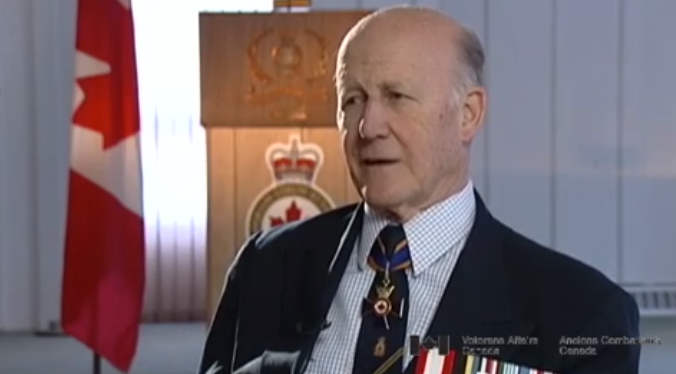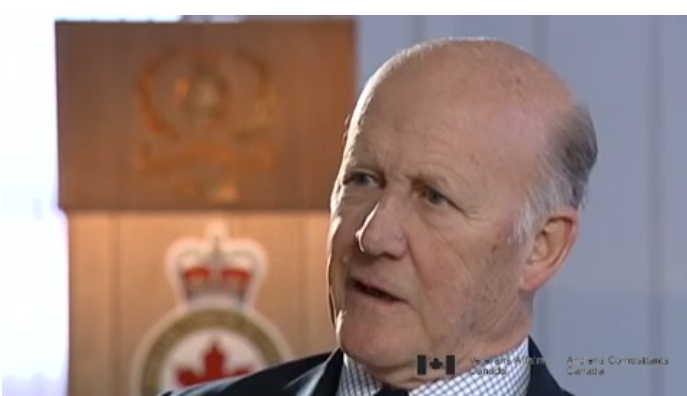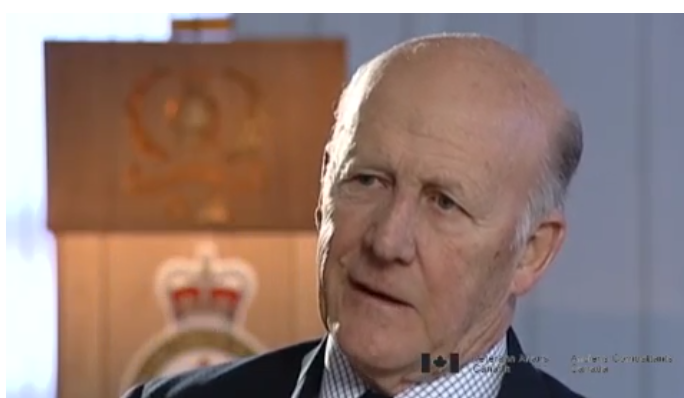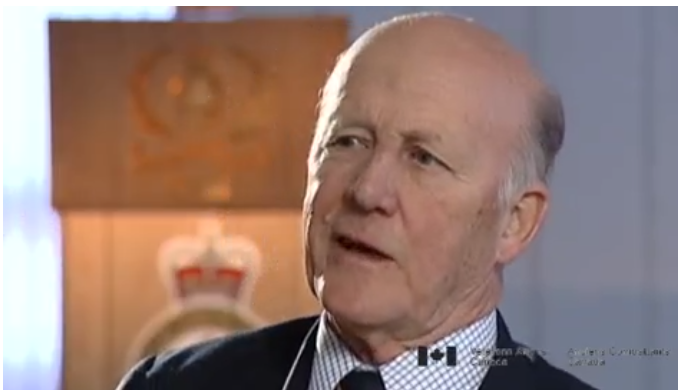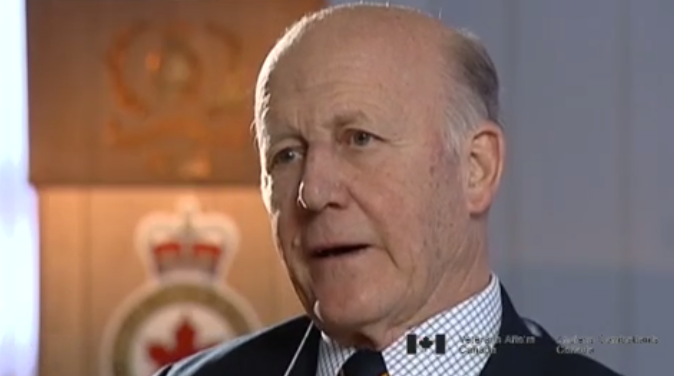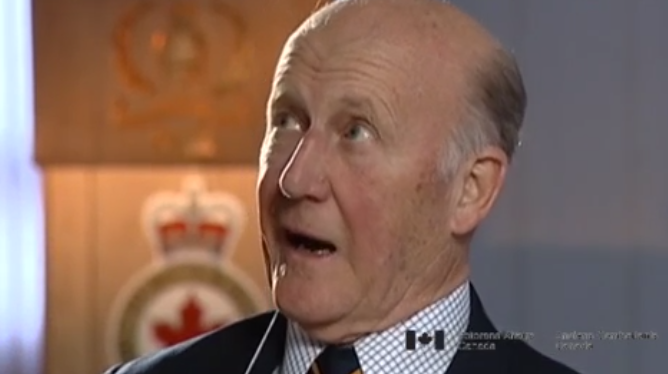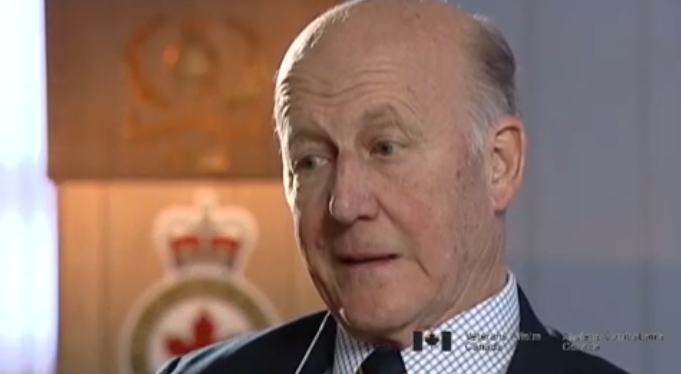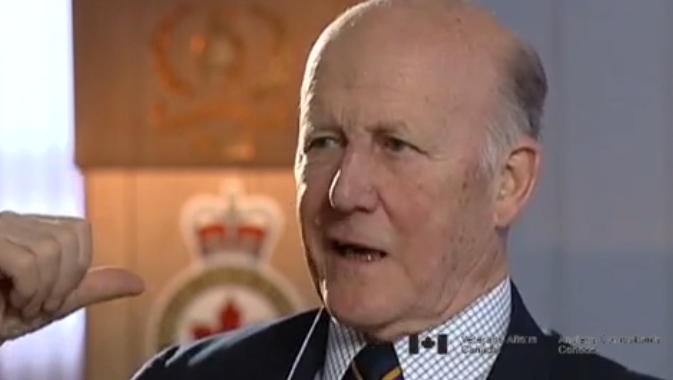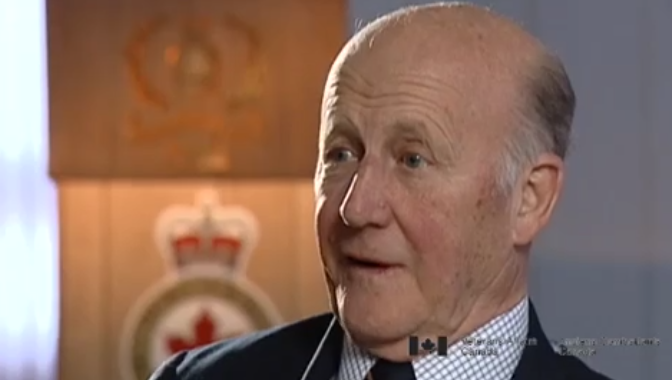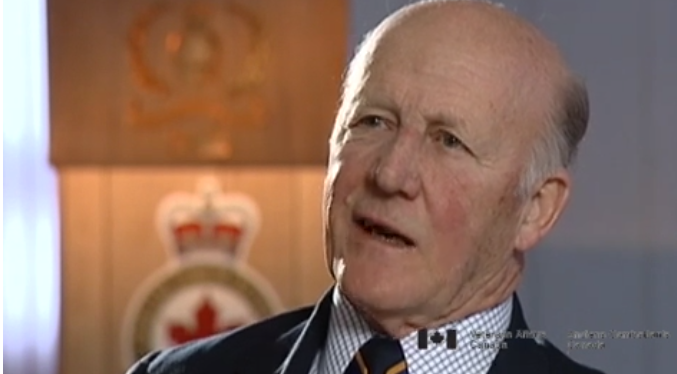The cease-fire had taken place the previous July, now this is the
early spring of ‘54. The units have completely stabilized but
they’re still facing, as a belligerent, they’re still facing, in
the case of the Canadians, they were in front of a Chinese
Division which was on the other side of the DMZ which was about
three miles wide, which included places on the Canadian sector
like Hill 355 where there had been a big battle and that sort of
thing. It’s right in the middle of that DMZ and we’re sort of on
the flank of it, so we used to spend a lot of time living on
those hills, that are patrolling those hills, with listening
posts and so on. The Chinese would do the same thing.
We’d occasionally, if we took a slight path a little different
we’d come face to face with a Chinese patrol. We’d sort of stare
at each other and if nobody made a move toward their weapons that
was it, we’d just, you know, we just headed back to our own lines
and they did the same thing. So it’s, there’s a certain amount of
tenseness and eventually it becomes a bit routine.
That’s dangerous, you don’t want, you don’t want things to ever
get to be too routine because you get despondent, you get
careless. A lot of defensive lines had been built up and by then
there were deep bunkers and railroad ties over your head and
about ten feet of earth or something that could take quite a
bombing before it got down to you. So we continued to develop
those things. We reinforced them, we repaired the barbed
wire fences, the obstacles and so on. We did that constantly
besides patrolling to the centre line. But we continually
developed because over the years and after a winter, and Korea’s
quite cold and the winter was very rough actually,
and eventually these things rot - the sand bags and so on, so
you’re constantly repairing this. You’re doing a lot of shooting
and manning your own weapons. You’re doing a lot of training all
the time, very intensive training that if it starts turning hot
again, you’ll be ready, you won’t be caught by surprise. But with
one big difference, that instead of two or three companies on the
front of the battalion you may have only one, an outpost.
They’re really lookouts at that stage and you, you’re constantly
in touch with your people and if Chinese trucks look as if
they’re turning, they’re taking the wrong turn, if you see them
at all, you keep reporting them. So there’s always a constant,
I’m sure they do the same thing on the other side. So there’s a
constant reporting of what’s going on at the front. They do like
us, you can see them shoot their mortars, you can see the
explosions of their guns when they shoot and that sort of thing.
And we do the same thing. And we all have binoculars looking at
each other. So there was a lot of that but this was done usually
on a rotational basis with about 120 to 150 men would man
the whole front instead of, say, five or six hundred. But there’s
always, there’s a tense moment every time that you run into them
in the back. Because they were doing the same thing up to the
centre line and we were doing the same thing in the centre line.
So it’s not a difficult thing to do, to find yourself slightly
over. And in fact we’ve had troops, even after the cease-fire
when I was there that, that wandered a little too far out and
were in fact captured and then handed over again through
International Red Cross or something a couple of days later.
Slowly, but surely, you took on some side interests, like our
troops, we lived beside a few Korean villages. You see how poor
they are. They’ve been devastated during the war. So the next
thing you know, we’ve got three or four guys that are helping
them build a school. So, that was part of it. So, to a certain
extent we were helping, I guess to resettle. But they weren’t,
in fact, allowed inside the demilitarized zone and unfortunately
some of them would go in there. They’d blow themselves up on
a mine field and we’d have to go and pick them up. So there was..
In some ways, there was nothing very new from one day to the next
but, you know, there’s always a potential of things turning sour,
so you have to be kept on your toes.



